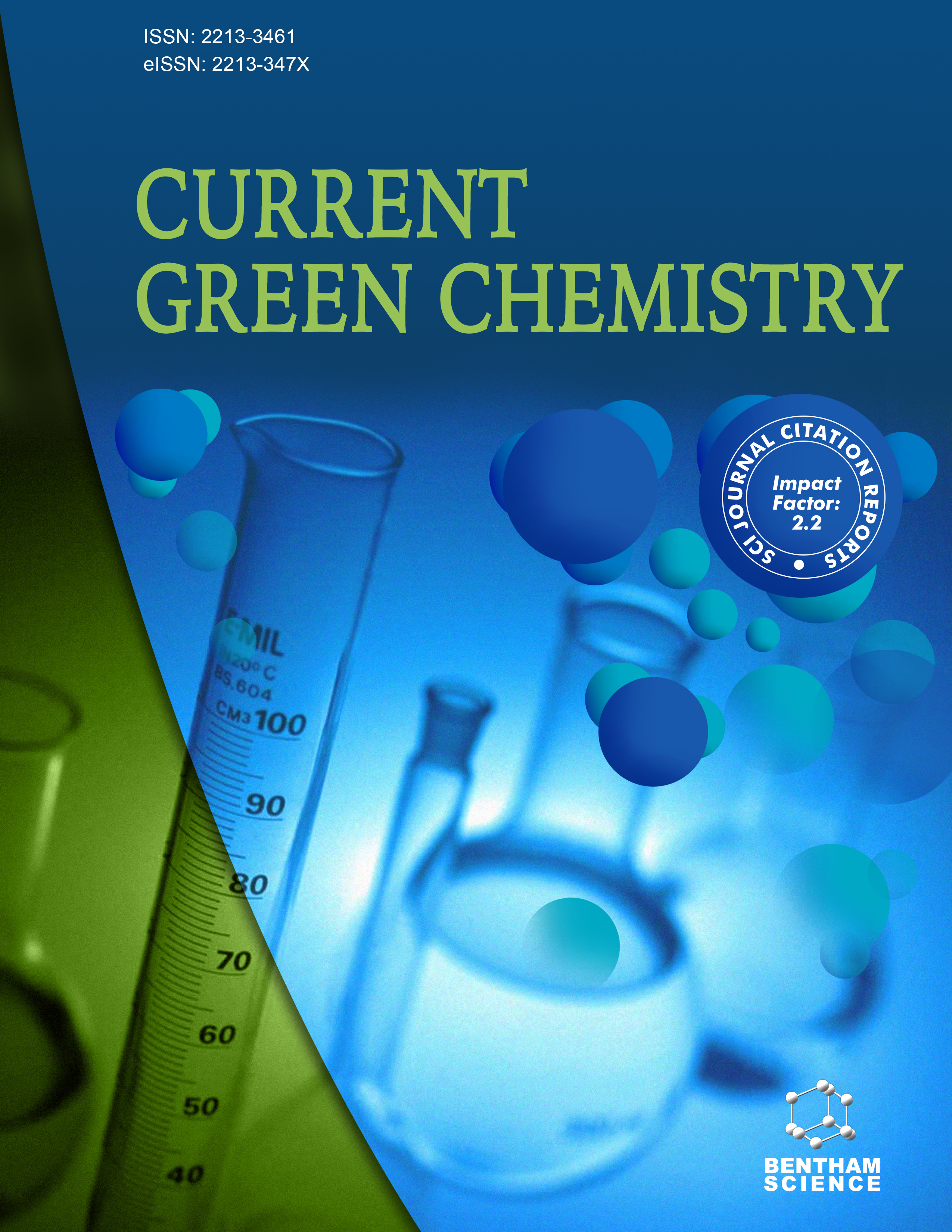- Home
- A-Z Publications
- Current Green Chemistry
- Previous Issues
- Volume 2, Issue 3, 2015
Current Green Chemistry - Volume 2, Issue 3, 2015
Volume 2, Issue 3, 2015
-
-
Kabachnik-Fields Reaction Under Green Conditions – A Critical Overview
More LessAuthors: Pawel Kafarski, Michal Gorny vel Gorniak and Iga AndrasiakThree-component one-pot Kabachnik-Fields condensation of carbonyl compounds with amines and phosphites is perhaps the most exploited reaction for the preparation of structurally diverse α-aminophosphonates. Most of the described protocols might be considered to some extent as green ones with solvent-free and microwave-assisted ones being the most effective.
-
-
-
Catalytic and MW-Assisted Michaelis-Arbuzov Reactions
More LessAuthors: Anna Dzielak and Artur MuchaNovel tendencies in the induction of the Michaelis-Arbuzov reaction become apparent when studying the current literature on the preparation of organophosphorus compounds. These alternatives involve catalysis with either metal salts and complexes or the application of metallic and non-metallic Lewis acids, microwave irradiation and performing the reaction in ionic liquids. The outcome of these developments is broadeni Read More
-
-
-
Catalytic Reactions in Fluorinated Phosphonates Synthesis
More LessAuthors: Magdalena Rapp, Tomasz Cytlak, Marta Z. Szewczyk and Henryk KoroniakThe goal of this review is to describe recent advances in metal catalyzed reactions and organocatalysis leading to α-monofluoro-, α,α-gem-difluoro- or trifluoromethyl phosphonate derivatives with a particular emphasis on introducing chiral centers in these compounds.
-
-
-
Microwave Irradiation As a Substitute for Phase Transfer Catalyst in CAlkylation Reactions
More LessAuthors: Gyorgy Keglevich and Alajos GrunIn this minireview, the possible utilization of the microwave (MW) technique in solid–liquid (S–L) phase C-alkylations is summarized. In the S–L phase C-alkylation of a series of simple active methylene containing compounds, such as diethyl malonate, ethyl acetoacetate and ethyl cyanoacetate, as well as P=O-containing derivatives, such as tetraethyl methylenebisphosphonate, diethyl cyanomethylphosphonate and diethyl ethoxyca Read More
-
-
-
Polymer-supported Phase Transfer Catalysts in Green Organic Syntheses
More LessAuthors: Gheorghe Ilia, Smaranda Iliescu and Adriana PopaThis mini review presents recent applications of polymer-supported catalyst in different green synthetic approaches, and is focused on the use of these types of catalysts in phase transfer catalysis processes. Phase transfer catalysis is now a well established method in organic synthesis in both industry and academia, being recognized as a versatile method because of its simple experimental operations, mild reaction conditions, Read More
-
-
-
Catalyst-Free Organic Synthesis At Room Temperature in Aqueous and Non-Aqueous Media: An Emerging Field of Green Chemistry Practice and Sustainability
More LessAuthors: Goutam Brahmachari and Bubun BanerjeeThe last decade has seen a tremendous outburst in modifying chemical processes to make them ‘green’ or at least acceptable so as to attain sustainability of our environment. People are keen to know new inventions in the field of chemistry but at the same time, they are also eager to know how far the newly developed processes are benign to us! Hence, alternative benign organic methodologies have become an impe Read More
-
-
-
Elaboration of Eco-friendly Nano-structured Ni/SiO2 and Pd/Ni/SiO2 Catalysts and Their Application for the Reduction of Nitro Compounds
More LessNovel nano-structured Ni(Pd)/SiO2 catalytic systems doped with carbon nanotubes (CNT) were prepared by the sol-gel method. The catalysts proved to be effective for transformation of nitroarenes into anilines by transfer hydrogenation method with the use of hydrazine hydrate as hydrogen donor. Elaborated catalysts provide remarkable advantages such as low metal loading, avoidance of toxic ligands, high yields Read More
-
-
-
Synthesis of (S)-(+)-2-(N-benzylamino)butan-1-ol from its Schiff Base by Catalytic Hydrogenation over Palladium
More LessAuthors: Laszlo Hegedus, Sandor Miskolczi, Gyorgy Bansaghi, Edit Szekely and Ferenc FaiglA chiral 1,2-amino alcohol derivative, (S)-(+)-2-(N-benzylamino)butan-1-ol (BAB), was synthesized from its Schiff base by catalytic hydrogenation over palladium on carbon, in various solvents (toluene, methanol, hexane, dichloromethane, tetrahydrofuran, ethyl acetate), under mild conditions (room temperature, atmospheric pressure). Preparation of the Schiff base was also optimized. This compound is a resolving agent for pr Read More
-
-
-
Highly Selective Synthesis of Carboxamides via Transition Metal Catalysed Aminocarbonylation
More LessAuthors: Mercedesz Kiss, Attila Takacs and Laszlo KollarThis short review summarises the most important results obtained during the past decade in the field of palladium catalysed aminocarbonylation. In this reaction, using amines as N-nucleophiles, the carbonylation of enol-triflates/aryl-triflates or their synthetic surrogates, alkenyl halides/aryl halides takes place resulting in the formation of unsaturated carboxamides or aryl carboxamides. In the latter case, 2-ketocarboxamide Read More
-
Most Read This Month
Article
content/journals/cgc
Journal
10
5
false
en


